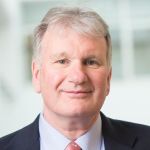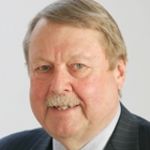Filter Results:
(1)
Show Results For
- All HBS Web
(1)
- Research (1)
- Faculty Publications (1)
Show Results For
- All HBS Web
(1)
- Research (1)
- Faculty Publications (1)
Page 1 of 1
Result
Faculty
Paul A. Gompers
Paul Gompers, Professor of Business Administration at the Harvard Business School, specializes in research on financial issues related to start-up, high growth, and newly public companies. Professor Gompers has an appointment in both the Finance and Entrepreneurial Management areas. He received his A.B. summa cum laude in biology from Harvard College in 1987. After spending a year working as a...
Faculty
Paul M. Healy
Paul Healy is the James R. Williston Professor at the Harvard Business School. His research covers a broad range of topics, including white collar crime, governance, business ethics, financial analysis, and Wall Street research. He joined the HBS faculty in 1998, after fourteen years on the faculty at the M.I.T. Sloan School of Management, where he received awards for teaching excellence in 1991,...
Faculty
Paul W. Marshall
MBA Class of 1960 Professor of Management, Paul W. Marshall, is affiliated with the Entrepreneurial Management Unit and teaches The Entrepreneurial Manager in the Turnaround Environment. This Elective Curriculum course focuses on the role of managers trying to execute an Operational Turnaround in a company in distress. He also teaches in the The Global Colloquium on Participant Centered Learning...
Faculty
Paul Hamilton
Paul studies the economic complements needed for firms to realize productivity gains from machine learning and artificial intelligence. These complements include data, human capital & skills, organizational processes, and business models. Paul Hamilton is a doctoral student in the Technology and Operations Management program at Harvard Business School (HBS). He is primarily interested in...
- November 2005 (Revised December 2016)
- Case
Bally Total Fitness (A): The Rise, 1962–2004
By: John R. Wells, Elizabeth A. Raabe and Gabriel Ellsworth
From a single, modest club in 1962, Bally Total Fitness had grown to become—in management’s words—the “largest and only nationwide commercial operator of fitness centers” in the United States in 2004. Bally had faced its share of challenges, but the last couple of... View Details
Keywords: Bally Total Fitness; Fitness; Gyms; Health Clubs; Chain; Securities And Exchange Commission; Paul Toback; Weight Loss; Exercise; Contracts; Personal Training; Retention; Accounting; Accounting Audits; Accrual Accounting; Finance; Advertising; Business Growth and Maturation; Business Model; For-Profit Firms; Customers; Customer Satisfaction; Public Equity; Financing and Loans; Revenue; Revenue Recognition; Geographic Scope; Multinational Firms and Management; Health; Nutrition; Business History; Lawsuits and Litigation; Management; Business or Company Management; Goals and Objectives; Growth and Development Strategy; Marketing; Operations; Service Delivery; Service Operations; Public Ownership; Problems and Challenges; Business and Shareholder Relations; Business Strategy; Competition; Corporate Strategy; Expansion; Segmentation; Trends; Cost Management; Profit; Growth and Development; Leadership Style; Five Forces Framework; Private Ownership; Opportunities; Motivation and Incentives; Competitive Strategy; Health Industry; United States; Illinois; Chicago
Wells, John R., Elizabeth A. Raabe, and Gabriel Ellsworth. "Bally Total Fitness (A): The Rise, 1962–2004." Harvard Business School Case 706-450, November 2005. (Revised December 2016.)




